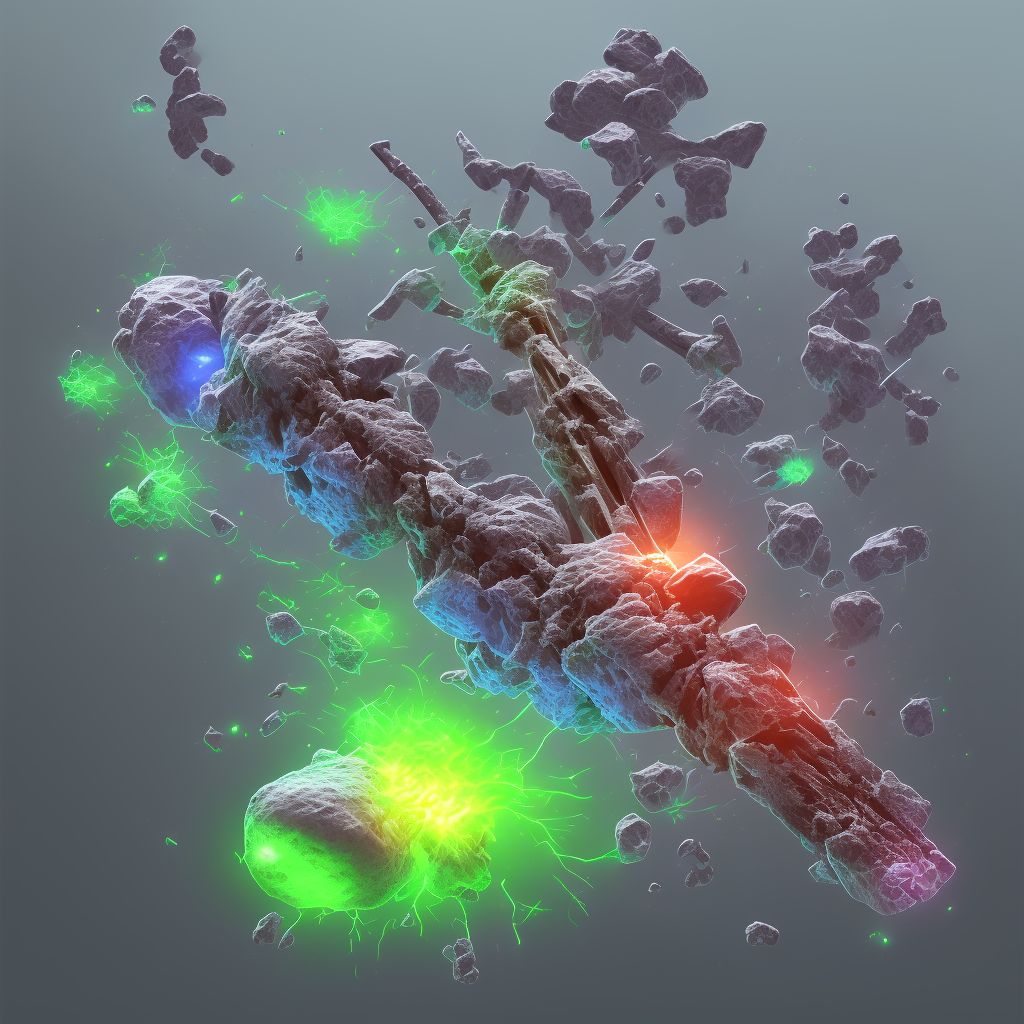
Nondisplaced transverse fracture of shaft of unspecified tibia, sequela Save
ICD-10 code: S82.226S
Disease category: S82.226: Nondisplaced transverse fracture of shaft of unspecified tibia
Nondisplaced Transverse Fracture of Shaft of Unspecified Tibia, Sequela
A nondisplaced transverse fracture of the shaft of the unspecified tibia is a type of fracture that occurs in the long bone of the lower leg. This particular fracture is characterized by a clean break across the tibia without any significant displacement of the fractured pieces. It is considered a sequela when it leads to long-term consequences or complications.
Common causes of this type of fracture include high-impact trauma, such as a car accident or a fall from a height. Sports-related injuries, such as those occurring during contact sports or high-impact activities, can also result in this type of fracture.
When a nondisplaced transverse fracture of the shaft of the tibia occurs, individuals may experience symptoms like localized pain, swelling, and difficulty walking or bearing weight on the affected leg. Prompt medical attention is crucial to ensure proper diagnosis and appropriate management.
Upon examination, X-rays or other imaging tests may be performed to confirm the diagnosis and assess the extent of the fracture. Treatment options vary depending on the severity and location of the fracture, as well as individual factors. However, this article will focus on the sequela (long-term consequences) rather than the treatment itself.
- Delayed Healing: In some cases, the nondisplaced transverse fracture of the tibia may take longer to heal than expected. This can result in prolonged immobilization and restricted mobility, impacting daily activities.
- Malunion: If the fractured bone heals in an incorrect alignment, it can lead to malunion. Malunion can cause functional limitations, pain, and discomfort. Sometimes, additional interventions like corrective surgeries may be required.
- Chronic Pain: Some individuals may experience chronic pain even after the fracture has healed. This can be caused by nerve damage, joint stiffness, or the development of arthritis.
- Reduced Range of Motion: Fractures of the tibia can result in a limited range of motion in the ankle and knee joints. Physical therapy and rehabilitation are often necessary to regain optimal function and mobility.
In conclusion, a nondisplaced transverse fracture of the shaft of the unspecified tibia can have long-term consequences. While treatment options are available, it is important to be aware of the potential sequela that may arise from this type of fracture. Early diagnosis, appropriate medical care, and adherence to rehabilitation protocols can help minimize the impact of these long-term consequences.
Treatment of Nondisplaced transverse fracture of shaft of unspecified tibia, sequela:
Treatment Options for Nondisplaced Transverse Fracture of Shaft of Unspecified Tibia, Sequela
A nondisplaced transverse fracture of the shaft of the unspecified tibia, sequela, refers to a fracture that occurs across the width of the tibia bone without any significant displacement. This type of fracture can be caused by trauma, such as a direct blow to the leg or a fall. If you hav...
To see full information about treatment please Sign up or Log in